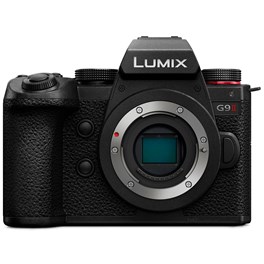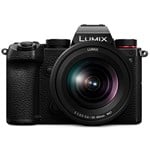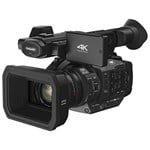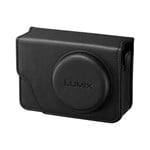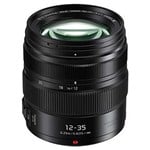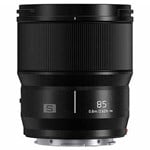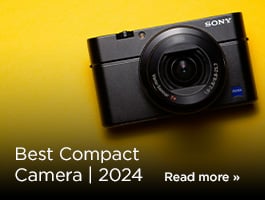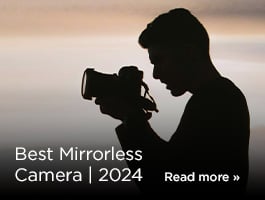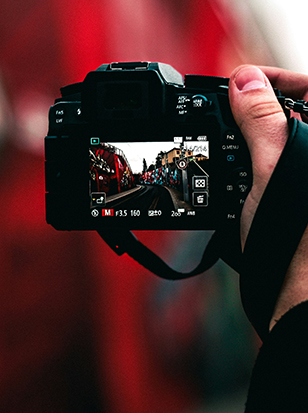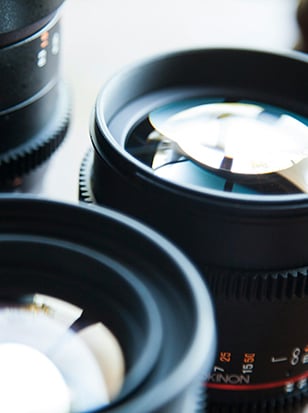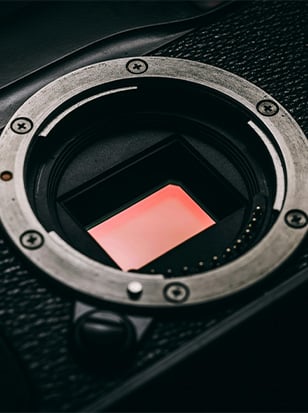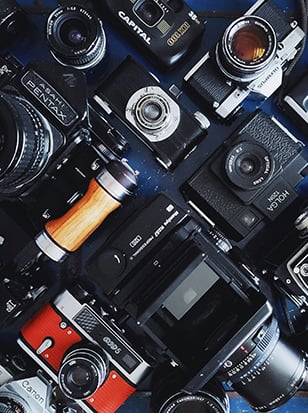
The best Panasonic cameras include a range of different options for users of all types, from beginners to professionals. The Lumix range encompasses fixed-lens compacts and two different mirrorless systems – the Micro Four Thirds Lumix G series, and the full-frame Lumix S cameras. You could be forgiven for being more than a little confused about which is right for you — but help is at hand.
This list represents the top of the pile, the Panasonic cameras that have most impressed our team of testers and experts in terms of image quality, build quality and features on offer. As Panasonic cameras are also excellent for video, we’ve included video-centric options as well as cameras for photographers. Plus, we’ve also taken value for money into account, and have made sure to feature budget-friendly cameras alongside the high-end kit.
Whatever your budget and whatever you want to shoot, there will be a Panasonic camera suitable for you. Here’s our rundown of the best of the best — though if you want more choices, check out our full guide to the best mirrorless cameras (which includes plenty of Panasonic-made options).
Best affordable Panasonic camera:
|
Sensor: 18.1MP 1/2.3" High Sensitivity MOS Lens: 20–1200mm equivalent, 60x optical zoom Video: 4K at 30p, Full HD at 60p Stabilization: Power O.I.S. with Active Mode Features: 4K Photo mode, 10 fps burst shooting |
Pros:
Cons:
|
If you’re looking to get started with photography and don’t have a huge amount to spend, a bridge camera like the Panasonic Lumix GZ82D could be just the thing. Boasting a powerful long zoom lens covering an equivalent focal range of 20-1200mm, the Lumix FZ82D is the camera that’s designed to shoot everything.
Bridge cameras are built with a form factor resembling DSLRs, boasting a larger body and a chunky handgrip. While this makes them a good deal bulkier than other types of compact, many photographers prefer having a bit more camera body to grip onto — and it also balances better with the big, long zoom lens.
These types of camera do come with drawbacks. The imaging sensor is significantly smaller than the type you’d find in an interchangeable-lens mirrorless camera, which has an impact on image quality, particularly in low light. However, given that you don’t have to factor in the cost of additional lenses, a camera like the FZ82D represents some of the best value for money you can get for photography, and is a brilliant choice for anyone who wants something that’s easy to get to grips with while also offering plenty of shooting versatility.
Best Panasonic camera for beginners:
|
Sensor: 16MP Micro Four Thirds Live MOS Video: 4K UHD at 30p/24p, Full HD at 60p Autofocus: DFD technology, 0.07s AF speed Burst Shooting: 8 fps (AFS), 6 fps (AFC) Features: 4K Photo mode, ISO up to 25,600 |
Pros:
Cons:
|
Though it’s an older camera, the Lumix G7 is still widely in production, and its ever-dropping price makes it an incredibly tempting option for beginners. It’s a Micro Four Thirds camera, meaning it gives you access to the enormous MFT stable of affordable lenses, and it also boasts a rugged feature-set that makes it highly capable for outdoor and travel photography.
Weighing just 410g, it produces crisp and punchy images full of colour and character. The Lumix G7 is capable of keeping up with fast subjects thanks to its 8fps burst speed, and if you need even more speed than this, the 4K Photo mode allows you to extract 8MP stills from the camera’s 4K footage, effectively giving you a 30fps burst rate.
The camera does show its age in a few ways. For instance, the 16MP resolution is low by today’s standards — while it’ll be fine for posting online and mid-sized prints, you don’t get the latitude to losslessly crop in that higher resolutions offer. Plus, the contrast-detect autofocus system feels a little clunky in this era of super-fast phase-detect systems. However, the Lumix G7 is still a brilliant camera for beginners — especially given that the price tag includes a lens — and the Micro Four Thirds system offers a compelling upgrade path if you find yourself wanting a more powerful camera down the line.
Best Panasonic camera for travel:
|
Sensor: 20.3MP 1/2.3" BSI-CMOS Lens: 24–720mm equivalent, 30x optical zoom Video: 4K at 30p, Full HD at 60p Display: 3.0" tilting touchscreen LCD Features: Built-in EVF, Wi-Fi connectivity |
Pros:
Cons:
|
A good travel camera should be able to do all types of shooting at once, while also taking up as small a footprint as possible. By those criteria, it’s difficult to find much fault with the Panasonic Lumix TZ99, a fixed-lens compact camera with a powerful 30x zoom, good for covering any and all eventualities while being small enough to fit in a pocket.
The lens itself is a 24-720mm equivalent optic with Leica-made components, ensuring excellent quality at all focal lengths. There’s also a built-in stabilisation system, which helps with making the extreme ends of the telephoto lens still useable when shooting handheld. The autofocus is reasonably snappy and accurate, with face-detection and eye-detection built in. It’s a very solid all-rounder for all manner of different shooting situations.
As a compact camera, the Lumix TZ99 does have some inherent drawbacks — the 1/2.3-inch sensor is smaller than those you’ll find in Panasonic’s interchangeable-lens cameras, which has an impact on image quality, particularly in low light. However, the convenience and value offered by this capable all-in-one photography package make it a compelling option for travel photographers.
Best Panasonic camera for photography:
Panasonic Lumix G9 II Digital Camera Body
Designed for high-speed photography, the Panasonic Lumix G9 II is a powerful next-generation camera ideal for solo creators. The new 25.2MP sensor, faster engine, and Phase Detection AF with 8.0-stop Body I.S deliver sharp, high-quality images and 5.7K 60p video. And, with improved ergonomics and a compact dust, splash, and freeze-resistant build, capture the all-important shot, whatever the weather.
£1,299.00 View
|
Sensor: 25.2MP Micro Four Thirds Live MOS Video: C4K/4K at 60p (10-bit 4:2:2), 120p slow-motion Autofocus: Phase Detection AF, Real-Time LUT Stabilization: 5-axis in-body, up to 8 stops Features: 13+ stops dynamic range, blackout-free EVF |
Pros:
Cons:
|
The Lumix G9 II is a triumph. A spectacular speedster that sets a new standard for Micro Four Thirds, it’s one of the best cameras for fast-action photography. Built tough with a weather-sealed body, it can stand up to the rigours of outdoor work, and the body features plenty of physical control dials for satisfying, tactile handling.
The image quality from the G9 II is nothing short of spectacular, with more than 13 stops of dynamic range when boosted, and rich, vivid colours. The autofocus system benefits from all the modern bells and whistles we’ve come to expect, including intelligent AI-powered subject detection and tracking, and with 779 AF points at your disposal, you’re well-covered for capturing subjects across the frame. The camera boasts a selection of creative looks to give your image a particular style or feel, including the striking high-contrast Leica Monochrome.
While we’ve recommended this camera to photographers, it’s also highly capable for video, capable of 5.7K 60P and 4K/C4K 120P recording in 10-bit. The Real-Time LUT feature also reduces the need for lengthy post-processing.
Best Panasonic camera for vlogging:
|
Sensor: 20.3MP Micro Four Thirds Live MOS Video: UHD 4K at 30p, Full HD at 60p Audio: OZO Audio with subject tracking Stabilisation: 5-axis Hybrid I.S. Display: 3.0" free-angle LCD, 1.84M-dot |
Pros:
Cons:
|
For vloggers or aspiring YouTubers who want a great-value video camera that won’t cost the earth, the Lumix G100D is a standout choice. Offering excellent value for your dollar — that price includes a zoom lens — it allows you to get started easily shooting great-quality 4K, and thanks to the sophisticated built-in mic system powered by Nokia’s OXO audio, your videos will sound great too. Though of course, if you prefer to augment your audio quality with a separate microphone, there’s a 3.5mm jack input available.
It’s a fairly simple and straightforward camera that’s overtly optimised for vlogging — there’s a vari-angle touchscreen for flexible composition, but no viewfinder. An automated vlogging mode will set everything up for you to deliver optimal vlogging quality — and if you want to get creative, there’s also a stop-motion animation mode and a time-lapse function.
Best affordable full-frame Panasonic camera:
|
Sensor: 24.2MP Full-Frame CMOS Video: 6K at 30p (10-bit 4:2:0), C4K/4K at 60p (10-bit 4:2:2) Design: Compact, lightweight body Features: In-camera LUTs, Lumix Lab app integration Connectivity: USB-C, Wi-Fi, Bluetooth |
Pros:
Cons:
|
Undoubtedly the sexiest member of the Lumix S series (we measured this using science), the Panasonic Lumix S9 is a stylish, affordable full-frame camera that hides some serious imaging capability in its diminutive frame. On the video side, you have hugely impressive 6K 60p footage, as well as access to real-time LUTs and a new MP4 Lite format that makes video easier to store and quicker to process. In the stills camp, you’ve got excellent image quality thanks to that full-frame sensor, with the hugely effective stabilisation system opening up all sorts of possibilities for shooting at slower shutter speeds without a tripod.
This is the most affordable route to getting Panasonic’s full-frame sensor. As such, there are compromises — the Lumix S9 only has a single SD card slot, for instance. It’s also worth being aware that the slim, light body can feel quite overbalanced when used with larger L-mount lenses. The flat style certainly isn’t for everybody — but if you prefer a sleeker camera over the chunkier SLR style, this gives you that with terrific image and video quality to back it up.
Best Panasonic camera for cinematic filmmaking:
|
Sensor: 44.3MP full-frame BSI CMOS Video: Up to 8K at 30p, 5.8K ProRes RAW HQ, 4K at 120p Autofocus: Phase Hybrid AF with AI subject detection Continuous Shooting: 40 fps (electronic), 10 fps (mechanical) Stabilisation: 8-stop in-body image stabilisation |
Pros:
Cons:
|
The hugely impressive Panasonic Lumix S1R II should set alarm bells ringing at other manufacturers. A glorious full-frame flagship mirrorless camera, it offers a commanding feature-set comparable to the flagships from other brands, and it does so at a price that undercuts pretty much all of them — some by quite a significant amount.
Equipped with 8K video and the ability to shoot internal ProRes 5.8K RAW HQ, the Lumix S1R II is a cinematic powerhouse, and serious filmmakers looking for a capable system camera should definitely put it high on their wishlist. Its footage boasts up to 14 stops of dynamic range, and the stabilisation systems are also hugely effective, providing up to eight effective stops of compensation. There’s even a cropless electronic stabilisation mode — granted, it requires certain conditions to work, namely that you’re using a distortion-corrected wide-angle lens, but it’s still a very impressive achievement.
While it costs more than the other cameras on this list, the Lumix S1R II offers amazing value for money when you tot up what’s on the table, and it’ll suit anyone who wants a seriously capable video machine.

FAQs
Are Panasonic cameras good for video?
Yes, very much so. Panasonic cameras are widely praised for their video capabilities. They offer the whole bag: high-resolution recording, reliable autofocus, and advanced features like V-Log and 10-bit internal recording. They’re a solid choice for content creators, filmmakers, and vloggers alike.
Do Panasonic cameras have good autofocus?
Panasonic have improved their autofocus systems significantly, particularly with the addition of hybrid and phase-detection AF in newer models. They offer fast and accurate performance for both stills and video, especially in well-lit environments.
Are Panasonic cameras good for beginners?
Absolutely. Panasonic offers user-friendly cameras with intuitive menus, in-body stabilisation and touchscreen controls. Whether you're learning photography or moving up from a smartphone, they make a great starting point.
What lens mount do Panasonic cameras use?
There are two main mounts: Micro Four Thirds for compact system cameras and L-Mount for full-frame models. Both systems offer a wide range of compatible lenses from Panasonic and third-party brands.
Do Panasonic cameras have image stabilisation?
Yes, most Panasonic cameras feature in-body image stabilisation (IBIS), which helps reduce camera shake when shooting handheld. It's especially helpful for video and low-light photography.
How do we decide?
Our in-house photography experts, store staff and partners all work collaboratively to pour over our guides and tips articles. We also consider emerging trends and customer feedback to make sure our guides are always up-to-date and reflective of what people are truly looking for. By curating only the best products, our guides provide trustworthy recommendations, making it easier for customers to make informed choices with confidence.
If you would like more advice on any purchase our contact centre staff are here to help. Alternatively, you can reach us via email or social media. And don't forget. If you were to purchase anything based on our recommendations you'll be covered by our full returns policy
Sign up for our newsletter today!
- Subscribe for exclusive discounts and special offers
- Receive our monthly content roundups
- Get the latest news and know-how from our experts



